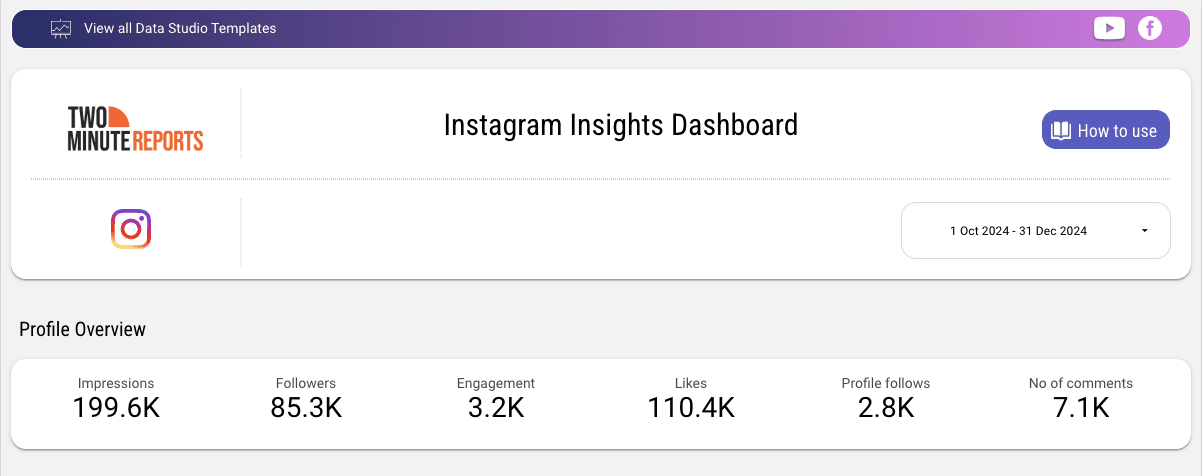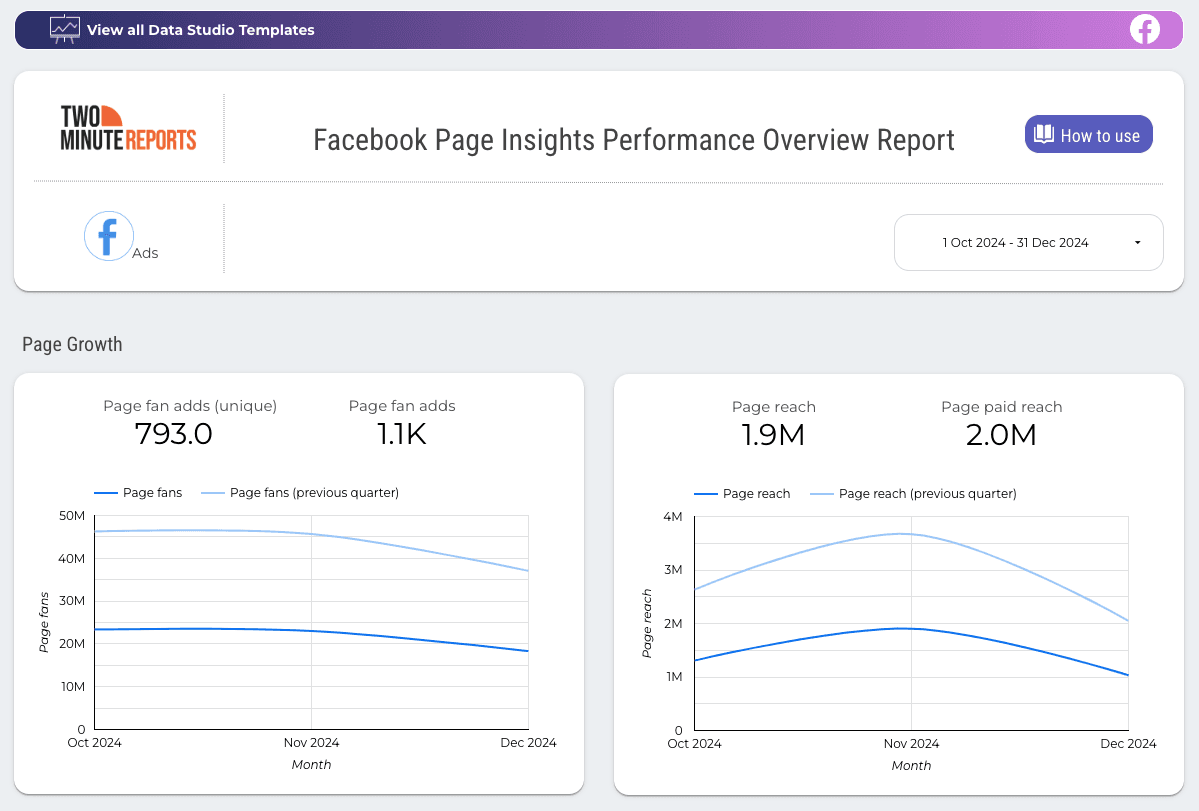Summarize this blog post with:
Marketers spend countless hours tracking likes, shares, and clicks, but despite all this data, proving real impact feels like chasing shadows. A report filled with numbers may show activity, but does it actually guide decisions or drive results?
That’s where social media reporting comes in. At its best, it’s more than a summary of performance; it’s a conversion tool. A strong report doesn’t just tell you what happened; it shows what works, highlights opportunities, and helps teams make smarter, data-driven decisions.
Most marketers treat reports as a box to tick. However, smart teams utilize them to demonstrate ROI, inform strategy, and establish trust with clients. With the right approach, your social media reports can stop being a chore and start being a powerful asset for growth.
What Is Social Media Reporting?
Social media reporting is the process of collecting, organizing, and presenting data from your social media channels to track performance, measure progress, and make informed decisions. It turns raw numbers into meaningful insights, helping you understand what’s working, what isn’t, and where to focus your efforts.
It’s important to distinguish reporting from analytics. Analytics dives deep into the “why” behind the numbers, examining trends, behaviors, and patterns. Reporting, on the other hand, is about communicating results clearly, summarizing key metrics in a way that stakeholders can understand and act upon.
When done right, social media reporting plays a crucial role in optimizing campaigns. By regularly reviewing reports, teams can identify top-performing content, adjust strategies in real time, allocate budgets effectively, and ultimately drive better results. In short, reporting transforms scattered data into a roadmap for growth.
Why Most Social Media Reports Don’t Convert
Despite the wealth of data available, many social media reports fall short of driving meaningful action. Here's why:
1. Too Focused on Vanity Metrics
Metrics like follower count and post likes are easy to track, but don't correlate with business outcomes. These vanity metrics can mislead stakeholders into thinking a campaign is successful when it may not be driving conversions or ROI.
2. Lack of Clear Insights or Next Steps
A report filled with numbers without context or actionable insights can leave teams uncertain about how to proceed. Effective reports should not only present data but also interpret it and suggest clear next steps to optimize performance.
3. Reports Aren’t Customized to Goals or Audiences
Generic reports that don't align with specific business objectives or audience segments can miss the mark. Tailoring reports to reflect the goals of different stakeholders ensures relevance and drives better decision-making.
4. Manual Reporting Leads to Inconsistencies
Marketers spend significant time manually compiling data from various platforms. According to a study by DoubleVerify, marketers spend an average of 10 hours per week on manual tasks, including reporting. This manual process can lead to errors and inconsistencies, undermining the reliability of the reports.
Elements of a High-Converting Social Media Report
Not all reports are created equal. The difference between a standard report and a high-converting report lies in how insights are presented and connected to business goals. Here are the key elements that separate good reports from great ones:
1. KPI Alignment
Every report should tie metrics directly to your objectives. Whether it’s engagement, traffic, or conversions, showing how each KPI contributes to broader goals ensures your report is actionable and meaningful.
2. Data Storytelling
Numbers alone don’t tell the full story. Great reports weave metrics into a narrative that highlights trends, successes, and areas for improvement. This helps teams and clients understand the “why” behind the results.
3. Visual Clarity
Charts, graphs, and dashboards are far more effective than spreadsheets filled with raw numbers. Clear visuals make it easier to digest information quickly and highlight key takeaways at a glance.
4. Actionable Takeaways
A report isn’t just about showing what happened; it should provide next steps. Include recommendations that guide decisions, like doubling down on high-performing content or testing new campaigns.
5. Comparative Insights
Context matters. Comparing metrics period-over-period (week-over-week, month-over-month) helps identify trends, measure growth, and spot performance shifts that require action.
By combining these elements, your reports don’t just summarize, they drive smarter decisions and conversions.
How to Create Social Media Reports That Convert
Creating reports that actually drive results doesn’t have to be complicated. Follow these steps to turn raw data into actionable insights:
1. Identify Your Key Metrics
Start by defining the metrics that matter most to your goals. Common KPIs include engagement rate, reach, click-through rate (CTR), and ROI. These should directly reflect the outcomes you want to achieve.
2. Choose Your Data Sources
Decide which platforms you’ll track, such as Facebook, Instagram, LinkedIn, TikTok, or others. Make sure the data you pull aligns with your KPIs and campaign objectives.
3. Automate Data Collection and Updates
Manual reporting is time-consuming and prone to errors. Automating your data collection ensures accuracy and saves hours each week.
4. Visualize Insights with Charts and Trends
Use graphs, dashboards, and trend lines to present data clearly. Visuals help stakeholders quickly grasp performance and highlight what’s driving results.
5. Add Interpretations and Recommendations
Numbers alone aren’t enough. Explain the story behind the metrics and provide actionable recommendations, like optimizing high-performing content or reallocating budgets.
Best Metrics to Track in Your Social Media Report
Tracking the right metrics is key to creating reports that drive action. Grouping metrics by campaign goals helps you focus on what truly matters:
1. Awareness
Measure how many people see your content and how far it spreads.
- Impressions
- Reach
- Followers
2. Engagement
Gauge how your audience interacts with your content.
- Likes
- Comments
- Shares
- Engagement Rate
3. Traffic
Track how effectively your social media drives visitors to your website or landing pages.
- Link Clicks
- Click-Through Rate (CTR)
- Landing Page Views
4. Conversions
Measure actions that contribute directly to your business goals.
- Leads
- Purchases
- Cost per Conversion
5. ROI
Understand the return on your social media investment.
- Return on Ad Spend (ROAS)
- Cost per Acquisition (CPA)
- Conversion Value
By focusing on these metrics, you can create reports that not only show performance but also guide decisions and optimize campaigns for real results.
Understand the metrics that drive results, explore our in-depth blog: 16 Social Media Metrics Every Marketer Should Track in 2025
Tools & Templates for Social Media Reporting
Creating high-converting social media reports is easier when you have the right tools and templates. While manual reporting can be time-consuming and prone to errors, automated tools simplify the process and save hours each week.
One standout solution is Two Minute Reports. It allows you to pull data from 30+ social platforms into Google Sheets or Looker Studio, and comes with features designed to make reporting faster and more effective:
- Pre-built templates to quickly generate professional reports
- Auto-refresh to keep your data up-to-date without manual effort
- Client-ready dashboards that are branded and visually appealing
Unlike traditional manual reporting, Two Minute Reports ensure accuracy, consistency, and speed, freeing up time to focus on analyzing results and making strategic decisions. With the right tools, creating insightful, conversion-focused reports becomes simple and scalable.
3 Best Social Media Report Templates for Marketers in 2025
Using platform-specific templates makes reporting faster, clearer, and more actionable. Here are three essential templates you can implement with Two Minute Reports to create client-ready dashboards that truly convert:
1. Instagram

Track key metrics like engagement rate, reach, story views, and follower growth. This template helps you quickly spot top-performing posts, analyze audience behavior, and optimize content for maximum visibility and engagement.
2. LinkedIn

Monitor post impressions, engagement rate, CTR, and lead generation metrics. Perfect for B2B campaigns, this template lets you showcase professional audience impact and demonstrate how LinkedIn activity drives business outcomes.
3. Facebook

Measure ad spend, conversions, CTR, and page interactions in one view. This template provides a clear picture of campaign ROI, highlights top-performing ads, and allows teams to make data-driven decisions with confidence.
What to Look for in a Social Media Reporting Tool in 2025
A great social media reporting tool today does much more than pull numbers—it helps you analyze, visualize, and act on your data efficiently. Here’s what to look for when choosing or using a reporting tool:
1. Summary Sections with Actionable Insights
Look for tools that automatically highlight key results and recommendations, so stakeholders can quickly understand performance and next steps.
2. Visual Dashboards
Reports should go beyond raw tables. Charts, graphs, and interactive dashboards make it easier to digest data, spot trends, and communicate results clearly.
3. Custom Branding
A modern tool allows you to add logos, colors, and style elements to your reports, making them client-ready and professional.
4. Automated Delivery
Automation saves hours each week. The best tools let you schedule reports, refresh data automatically, and deliver them directly to clients without manual effort.
With these features, your social media analytics reporting tool becomes a strategic asset, helping you make smarter decisions, optimize campaigns, and impress clients with data-driven insights.
Conclusion
The right reporting strategy doesn’t just summarize performance, it sells results. When your reports are clear, actionable, and aligned with your goals, they become a powerful tool for decision-making and growth.
With Two Minute Reports, you can turn every report into a conversion story, automating data from multiple platforms, visualizing insights, and delivering client-ready dashboards in minutes.
Frequently Asked Questions
Social media reporting is the process of collecting, analyzing, and presenting data from different social platforms to measure performance against your goals. It helps marketers understand what’s working, what’s not, and how to optimize future campaigns.
Data tells the story behind your campaigns. Reporting helps you identify trends, prove ROI, and make informed decisions instead of guessing what’s performing well. It’s also essential for agencies to show clients the tangible impact of their social media efforts.
A strong report should include key KPIs like reach, engagement, traffic, conversions, and ROI. It should also provide context, insights, comparisons, and actionable recommendations, rather than just numbers.
Most teams create reports weekly or monthly, depending on campaign goals and client expectations. Automating your reports through tools like Two Minute Reports saves time and ensures you always have up-to-date performance insights.
Vanity metrics are numbers that look good on paper but don’t necessarily reflect success, like follower count or post likes. High-converting reports focus on metrics tied to real outcomes, such as engagement rate, CTR, and conversions.
Yes. With automation tools like Two Minute Reports, you can schedule updates, pull fresh data from all your channels, and generate client-ready dashboards automatically. This eliminates manual effort and ensures reports are always accurate.
Related Blogs

Meet the Author
Shabika Venkidachalam
Shabika, at her core, is a storyteller who believes even data-heavy topics can be infused with heart. At Two Minute Reports, she blends creative writing with user intent to create clear, purposeful content that is deeply human. Away from her desk, she finds inspiration in nature, where creativity flourishes without distractions.





